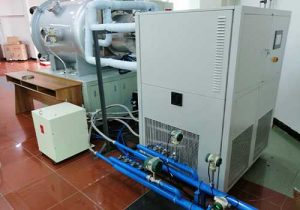portable heating system
Introduction to Portable Heating Systems
Portable heating systems are designed to provide heat in a flexible and convenient manner. They are ideal for situations where permanent heating solutions are not feasible or where heat is needed in a temporary or movable setting. These systems come in a variety of types, each with its own advantages and suitable applications.

Types of Portable Heating Systems
Electric Heaters: These heaters use electricity to generate heat and are available in various forms, such as space heaters, oil-filled radiators, and ceramic heaters.
Gas Heaters: Powered by propane or natural gas, these heaters offer high heat output and are suitable for outdoor use or in areas without access to electricity.
Solar Heaters: These systems use solar energy to heat water or air, providing a renewable and environmentally friendly heating solution.
Efficiency of Portable Heating Systems
The efficiency of a portable heating system is determined by its ability to convert energy into heat with minimal losses. Factors affecting efficiency include the type of fuel used, the design of the heater, and the presence of features like thermostats and variable heat settings. For instance, solar water heating technology has been shown to have significant potential for energy savings and environmental benefits.

Applications of Portable Heating Systems
Portable heating systems are used in a wide range of applications, including:
Personal Use: For individual rooms or spaces where additional heat is needed.
Industrial Processes: In manufacturing and processing facilities where localized heat is required.
Emergency Response: To provide temporary heat in disaster relief situations or construction sites.
Safety Features of Portable Heating Systems
Safety is a paramount concern with portable heating systems. Key safety features include:
Tip-Over Protection: Automatically shuts off the heater if it is tipped over, reducing the risk of fire.
Thermostat Controls: Allows for precise temperature control, preventing overheating.
Overheat Protection: Shuts off the heater if it reaches a dangerous temperature.
Maintenance of Portable Heating Systems
Regular maintenance is essential for the efficient operation and longevity of portable heating systems. Maintenance practices include:

Cleaning: Regularly cleaning the heater to remove dust and debris that can affect performance.
Inspection: Checking for any signs of wear or damage, such as frayed cords or broken parts, and replacing or repairing as needed.
Industry Standards and Best Practices
Industry standards guide the selection and operation of portable heating systems to ensure energy efficiency and reliability. Best practices include:
Energy Efficiency Ratings: Choosing heaters with high energy efficiency ratings to reduce operating costs.
Safety Certifications: Ensuring that the heater meets safety standards and certifications.
Proper Ventilation: Using the heater in well-ventilated areas to prevent the buildup of harmful gases.
Conclusion
Portable heating systems offer a flexible and convenient solution for a variety of heating needs. By understanding the different types, their efficiency, safety features, and maintenance practices, users can select the most suitable system for their requirements. Industry standards and best practices ensure that these systems operate efficiently and safely, providing reliable heat when and where it’s needed.
Related recommendations
sistem water cooled chiller
850Industrial Process Water Chillers: Efficient Cooling for Industry Industrial process water chillers are an essential component in many manufacturing and industrial processes where precise tempe...
View detailsportable chiller manufacturers
686Portable Chiller Manufacturers: Customizable Cooling Solutions Portable chiller manufacturers cater to the diverse needs of industries by providing a wide array of portable chillers designed fo...
View detailsheating cooling products
443Heating and Cooling Products: A Comprehensive Guide Introduction to Heating and Cooling Products Heating and cooling products are systems and devices designed to maintain optimal temperature...
View detailsAdvantages of Multiple Types of Air-cooled Chillers
1214Advantages of Multiple Types of Air-cooled Chillers The principle in nature of an air-cooled chiller is a multifunctional machine that removes liquid vapor through a compression or heat abso...
View details
 LNEYA Chiller
LNEYA Chiller






HelloPlease log in